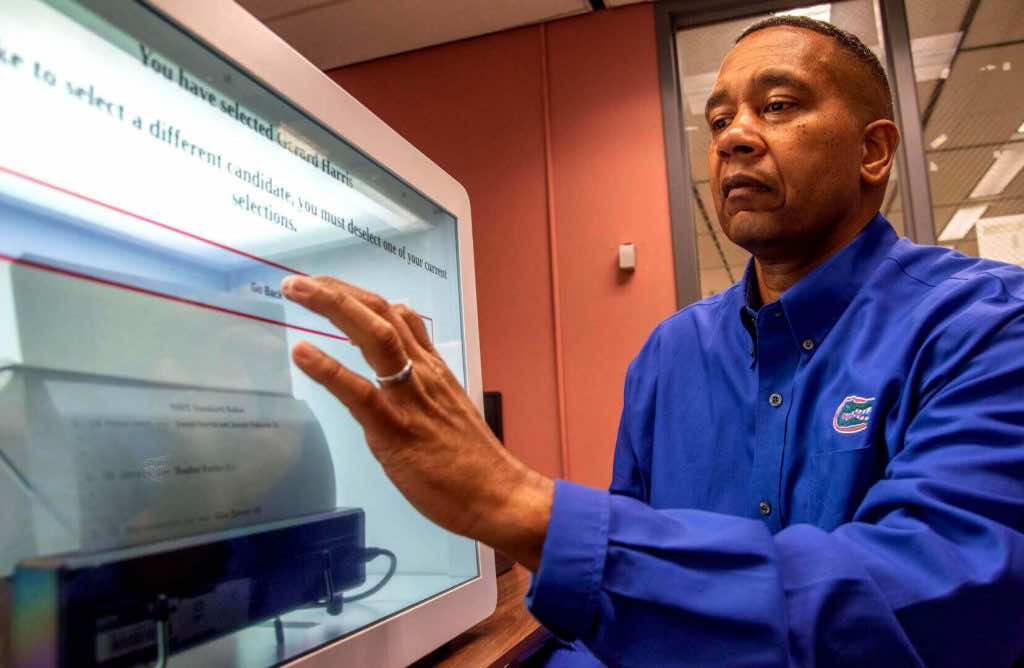Juan Gilbert, a computer science professor at the University of Florida, designed an electronic voting system enclosed by clear glass, allowing voters to see and check their paper ballot as it is printed after casting their ballots.
Election security became a national issue following the 2020 presidential election, when some Republicans claimed, without evidence, that voting machines had been tampered with. As a result, voting system manufacturers are now suing right-wing media sites and numerous prominent supporters of former President Trump for defamation, seeking billions of dollars in damages.
Gilbert has challenged hackers to try to infiltrate his ultimate voting system. Because of the glass, Gilbert claims that the machine is more transparent than any other system.
Gilbert’s voting system features a touchscreen interface with a clear bow for voters. The voter’s selection is printed on paper within the box using a printer connected to the device’s Prime III software, which is then scanned to determine the results. In addition, the transparent cover ensures that voters will be alerted immediately if a USB device is plugged in for hacking.
Each component’s software is kept on a Blu-Ray disc in read-only format. After each vote is cast, the voting system reboots to ensure no component’s code has been infiltrated by unauthorised code.
Additionally, the touchscreen ensures that voters immediately turn to look at the printer after casting their vote to check for any fraud.
Gilbert asked for unlimited access to his device earlier this summer so that a dozen scientists might evaluate it. The Undark analysis found that despite this, no specialists offered to assess the system this year. Nevertheless, the system is anticipated to return during DEF CON next year.
Gilbert’s voting machine might never be used in an election, though. Gilbert may lose hundreds of thousands of dollars if his system is not certified soon. A French company built the prototype, but Gilbert has to find interested customers if the technology is to be extensively used.

